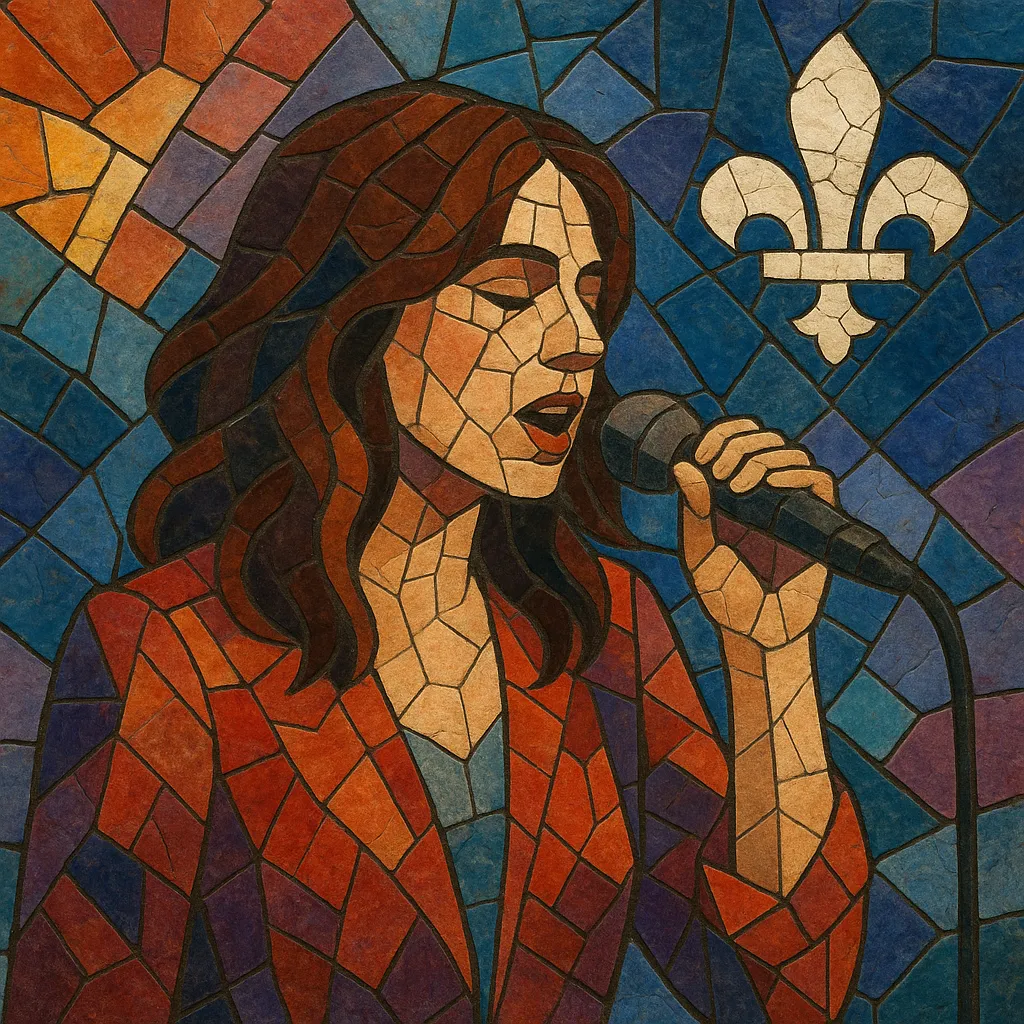Pop québécoise is the French-language popular music of Québec, blending the melodic intimacy of chanson with the hooks and production values of international pop.
It emerged during the Quiet Revolution, when a new cultural confidence encouraged artists to write in French (often in joual), while absorbing rock, yé-yé, folk-rock, and later synth-pop and electronic influences.
Across decades, it has ranged from orchestral ballads and soft-rock crooners to new wave, singer‑songwriter pop, and contemporary electro‑pop—always centering on strong melodies, emotive vocals, and lyrical storytelling tied to Québec identity.
Pop québécoise took shape amid the Quiet Revolution, as Québec artists moved from covering anglophone hits to writing original songs in French. The yé‑yé wave and French chanson provided a lyrical and melodic model, while rock and folk-rock added youth energy and a modern band sound. Early pioneers set the standard for emotive storytelling delivered in a distinctly Québécois voice.
Through the 1970s, the scene professionalized: lavish stagecraft, orchestral arrangements, and album-oriented writing coexisted with radio-friendly singles. Artists blended chanson’s literary depth with soft rock, new wave, and synth-pop production, creating a sleek, contemporary francophone pop identity that dominated Québec airwaves and live circuits.
In the 1990s, Québec’s pop infrastructure—labels, media, festivals—helped artists scale globally. Power ballads, adult contemporary production, and bilingual releases broadened reach without abandoning French-language roots, proving that Québec pop could compete on the world stage.
A new generation refreshed the sound with indie pop, electro-pop, and art-pop influences. Home-studio production, piano-led songwriting, and nuanced lyricism thrived alongside mainstream radio formats, strengthening the ecosystem from major venues to intimate clubs and digital platforms.
Streaming, social media, and cross-border collaborations accelerated stylistic hybridization. While production trends evolve—retro synth textures, minimal beats, or lush cinematic pop—the core traits endure: expressive French-language vocals, melodic immediacy, and narratives rooted in Québec culture.


